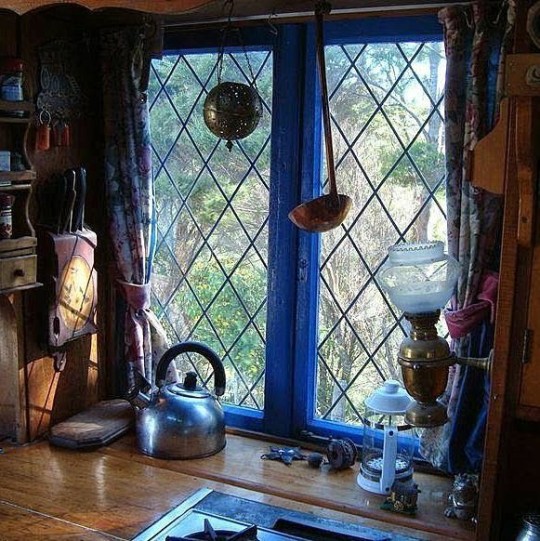Blog about (day)dreams, spirituality, witchcraft, esoterism, mythological/folklores related topics and figures, both fictional and real beliefs. This blog is a safe space for PCP, therian, otherkin, fictionkin, thoughtforms, tulpamancers, reality shifters & endogenic systems. Also Features works of fiction with mythological & spiritual themes. ✨ ask for tags please ✨ Omnist•Beginner Eceletic Witch• Neo Pagan|Coping/heartlink•Parakin| ND•MaDD•Use tone tags when interacting w me pls |They/Them + ask|23|Fr/Eng|NB/Aroace spec| ♓|INFP|Chaotic Neutral| Banner: Dusk by Ewan Rose (@aurosoulart)•PFP: Commisioned for me by @kiberu_oni (IG)
Last active 2 hours ago
Don't wanna be here? Send us removal request.
Photo

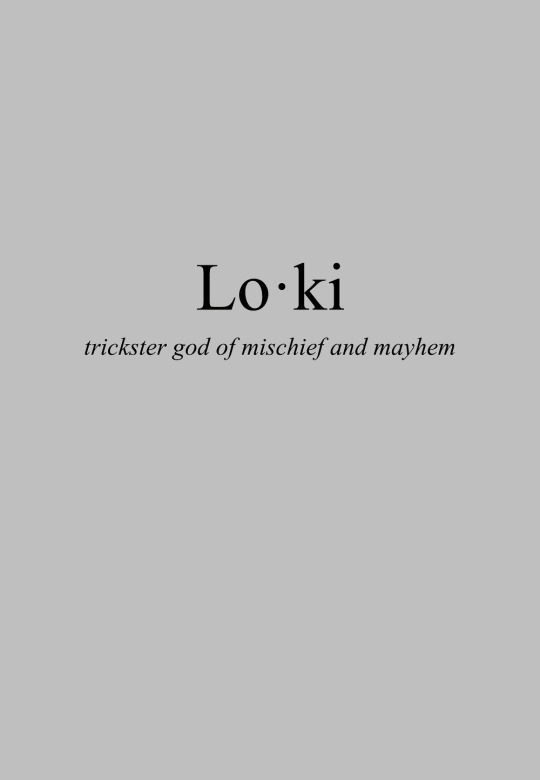


The Evermore Grimoire: Mythology
Loki was the trickster god of mischief and mayhem in Norse mythology. They were also a shapeshifter who took on various forms that motivated their devious nature which included wealth, women, wisdom, and the sheer pleasure of their knavery. Loki’s appearances were never quite what they seemed and whilst their antics frequently embroiled the gods in sticky situations, their tricks often rescued them from troubled times as well. One of Loki’s most infamous stories involves the death of Baldr (god of bravery). It all began when Baldr was troubled by dreams of his own death, dreams that his mother Frigg (goddess of prophecy) had as well. Seeking answers, Odin (king of Asgard) summoned a völva (Viking Witch) from the dead. The völva confirmed Odin’s fears and told him that Baldr would indeed die, but did not reveal how his death would occur. In her worry Frigg, made all things in existence pledge that they would never harm Baldr. All did except for mistletoe, which, Frigg reasoned, was so harmless that it could never cause injury to her mighty son. When Loki learned of all this, they concocted a foul plot. They fashioned a spear out of mistletoe and gave it to Hodr (god of darkness), the blind son of Odin and Frigg. Loki told him to throw the spear at Baldr as a joke, and Hodr, not knowing the spear could actually harm his brother, complied. The spear pierced Baldr’s chest, killing him.
original artwork by IrenHorrors
701 notes
·
View notes
Text
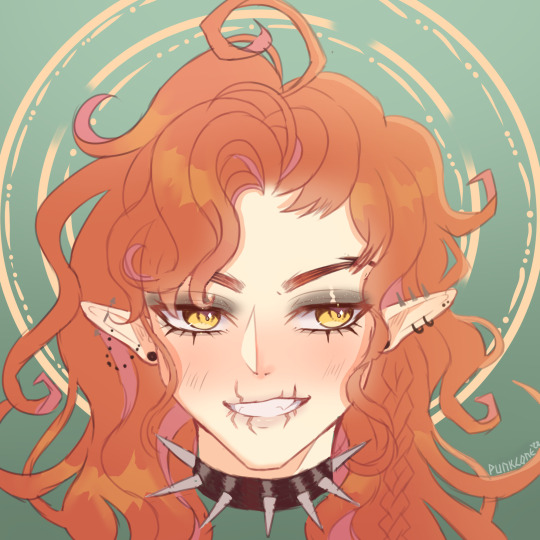
Just an older sketch of Loki I did when I was artblocked. I think it's frustratingly fitting that They look so different every time I draw Them-I love consistency but the shapeshifting nature kicks in!
115 notes
·
View notes
Text
Jasper's Pop Culture Magic/Paganism Guide For Beginners & Toe-Dippers
When you first get started in pop culture magic (PCM) or paganism (PCP), it can seem overwhelming because of the lack of broad-scope sources and the abundance of options for what to use in your craft. If you're building a PCM-based praxis, you may be wondering what you should do.
First, narrow it down.
Choose the things you deeply love and carry with you, stuff you've loved for a while or can see yourself loving for a long time. Stuff that makes sense as a medium for magic for you.
When I started, I only used Pokemon-based stuff, because I've been unfortunately obsessed with that series since I was little. I eventually branched out into Dungeons and Dragons, the Elder Scrolls, and Magic: the Gathering. There have been plenty of series that I enjoy that I think could be an interesting addition to my magical practice, but I haven't included them.
Second, find what fits.
I don't interact with my four media sources the same way, and this seems to be a pretty common occurrence in PCM/PCP. There are several ways to interact with pop culture in your magical and/or religious practice(s), some of which I asked about in my recent pop culture survey. If you're looking to incorporate PCM into your craft or PCP into your religious practice, consider the following methods (though there are more than just those listed here).
Divination (either outright or inspiration).
Things like cards or runes can be used in divination, especially if they're already used for that in the source.
Other things can be used as inspiration for divination methods, such as tarot decks based on the media in question or using the soundtrack (if applicable) for shufflemancy.
Elemental (or similar) systems.
Some pieces of media have elemental systems, many of which follow elemental systems used in our world. For example:
Avatar: The Last Airbender (and its related spinoffs): air, earth, fire, water (and possibly spirit? I don't keep up with it) Cardcaptor Sakura: dark, earth, fire, ice, light, snow, thunder, water, wind, wood Flight Rising: arcane, earth, fire, ice, light, lightning, nature, plague, shadow, water, wind Iron Widow: earth, fire, metal, water, wood
Other franchises don't have elements, but rather systems that categorize magic in other ways.
Dungeons and Dragons: Magic Schools (abjuration, conjuration, divination, enchantment, evocation, illusion, necromancy, transmutation) Magic: The Gathering: Colors (White, Blue, Black, Red, Green, and sometimes Colorless) Pokemon: Types (there are 18 of those damn things, I'm not listing them all here) The Elder Scrolls: Magic Skills (Alteration, Conjuration, Destruction, Enchanting, Illusion, and Restoration, though Alchemy is a Stealth Skill that's often added)
Figures such as protagonists, in-universe divine figures, or different races (in the case of sci-fi/fantasy).
This can be close to deity work, hero worship, working with archetypes, or spirit work. It can vary and fluctuate. This leans more into the pop culture paganism side, but it's something that's always an option.
Working with different races, such as the Merfolk of MTG, is another option if you don't like working with individuals and rather choose to interact broadly. I don't know much about it, but uhhhh I may be mildly obsessed with the idea and am researching it.
Inspiration for servitors/thoughtforms.
If you have the energy and magical programming know-how, this could be an interesting avenue to explore. It helps with visualization and ideas of what the servitor/thoughtform looks and acts like.
Magical praxes (ideas of how magic works).
This is a lot more vague, but essentially you're taking ideas from the magic system of the media and working with it in our world to help explain how magic works to you.
Spells such as wards or fireballs.
You actually don't have to be a PCM practitioner to make spells based off of pop culture things (not just spells, but things like character traits, Pokemon moves/abilities, and so forth).
This is the most common version of PCM that non-pop magic users dip their toe into or that pop magic users come up with to interact with media that isn't central to their practice/magical praxis.
Symbols, sigils, and languages/scripts.
Many forms of media bless us with various symbols, sigils, languages, and scripts that have different meanings. These are a treasure trove for magical working if you like to write or draw.
You don't have to work with all of these various forms in your craft, and you don't have to do the same thing for all the forms of media. I'll go through my four to illustrate:
Dungeons and Dragons: divination, elemental system, spells, symbols
Magic: The Gathering: elemental system, inspiration for servitors/thoughtforms, spells, symbols
Pokemon: elemental system, inspiration for servitors/thoughtforms, spells
The Elder Scrolls: figures, spells, symbols
Finally, there is so much nuance in PCM/PCP, and most of it has to be discovered firsthand.
I can talk for days about how I built my magical praxis, my magic system, from the ground up. In fact, I'm even writing a book about where it is now. But that topic is boring and won't help anyone who doesn't care about my craft and wants to build one of their own.
Dabbling is always something you can do, though I recommend being wary of just taking something from a real-world culture, religion, or other group just because it appeared in a piece of pop culture media. Not everything is free for the taking. Be respectful.
319 notes
·
View notes
Text
Pop Culture Paganism and The Main 3(ish)* Categories of Work/Worship

(*Please see end note for further information)
(Heads up, this is text-heavy and a bit UPG based)
In the years I’ve been involved in Pop Culture Paganism and the like, I’ve noticed that there tends to be around 3 main categories of entities that people tend to gravitate towards. So I though as a bit of a follow-up to the post I’ve made regarding the fundamentals and foundations of Pop Culture Paganism, Witchcraft, and the like, I’d briefly go into these categories for those who may be just dipping their toes or simply curious.
Pop Culture Gods/Source-Related Gods

Essentially working with and honoring the gods and deities found within one’s media source of choice. May be a good starting point for those more used to “traditional” deity worship as they tend to follow similar (and relatively static) frameworks.
Source Examples include but aren’t limited to:
The Elder Scrolls
Dungeons and Dragons
Genshin Impact
Warcraft
Warhammer
Pokémon (I.e Legendaries)
Pop Culture Spirit Work/Individual Entity Work

Instead of someone already labeled as a deity, working with an individual character(s) as if they were deity (the Godform approach) or simply choosing to work with them as they are with or without the “deity” label (ex: Spirit Guides, Spirit Companions, etc.). Active/static levels depend on the specific character and/or source. This can also include calling upon or invoking a certain character for workings/spells/rituals without necessarily devoting or worshipping.
Examples include but not limited to:
Working with a protagonist character to boost one’s bravery
Invoking an antagonistic or villain character for baneful works (use with caution)
Celebrity Egregore/Persona Work

Somewhat similar to the aforementioned Spirit/Individual Entity work, celebrity egregore/persona work involves working with the egregore and/or persona of “irl” people and celebrities, living or dead. Keep in mind that you’re not working with the actual person, but essentially the public presentation of them or how popular culture as a whole recognizes them. While arguably the most active out of the categories, it’s also the most prone to change and volatility depending on the image of whomever you’re working with (scandals, death, change of focus or image, etc.). (Note: While some books may say that working with the egregore of an actual person may also affect their own psyche and energies and the like, I personally disagree with this as I feel that not only is that disrespectful to any inner or behind the scenes struggles the celebrity in question may have faced/be facing, but also disrespectful to any others that may have been affected by said celebrity’s behaviors in the case of harmful events. Whether one adheres to the aforementioned view or not is up to the individual, I just wanted to give my own two cents.)
Examples include but are not limited to:
Working with a celebrity egregore associated with strength (ex: a popular wrestler) to help increase one’s own
Calling upon a famous artist’s egregore for aid in creative inspiration
I’ve tried my best to make this as clear and concise as possible, but if you have any questions, feel free to let me know.
As always,
Stay safe, have fun, stay spooky 💜
(*Endnote: I’ve at least seen or heard various instances of practitioners calling upon spirits/entities/egregores based on creatures found in cryptozoology as a form of pop culture paganism [Mothman being the most notable]. However, due to several folkloric creatures in certain cultures often being mislabeled as “cryptids” [i.e: thunderbirds, “skin pedestrians”, “windy boys”, etc.], such is not advised due to possible instances of cultural misuse and/or appropriations)
116 notes
·
View notes
Text

Pop culture entities (also called/considered to be egregores) are entities that originate from pop culture media. They are thoughtforms, energy forms or tulpas that were created (whether intentionally or unintentionally) by the constant collective thoughts of a distinct group of people (i.e. the fanbase of a popular anime series) . They are produced by the imaginative, creative and emotional energies of the collective that forms the archetypal imagery of whatever or whoever the collective is focusing their thought energies on.
For example Hisoka from HunterxHunter can be considered a pop culture entity because along with the popularity of the franchise itself there's been quite a few blogs, fanfictions, fan-artworks, fan-edits, cosplay and so on made about the franchise and him. All the energies that was poured into the franchise (i.e. those who created the franchise and those who read the manga and watched the anime) in general goes into manifestation and feeding of his pop culture archetype and all those thought energies that's put into his manifestation also decides how dependent or independent he is to/of his own/original reality (the HunterxHunter universe)
Pop culture entities are sentient beings that will continue to exist as long as there's a steady supply of thought energy that feeds them, meaning as long as there's a fanbase of some kind of the entity and whichever pop culture media it originates from, it will continue to exist. Pop culture entities usually start off entirely dependent on their own/original reality meaning the pop culture entity' behaviour, mindset, actions etc. are all dependent on whichever myths, lore, pop culture media etc. they originate from, but the more thought energy is put into the entity the more independent the pop culture entity can become.
What this means is that it's less likely for pop culture entities that don't have a large fanbase to act independently from whatever information is available on them or their own/original reality, but if the pop culture entities have a very large fanbase then they're more likely to act independently from whatever information is available about them. For example Takane from Takane To Hana is less likely to interact independently from what's mentioned about him in the manga because he and the manga itself doesn't have that large of a following but Uncle Hiro from A:TLA is able to interact independently from the series because A:TLA is a really popular franchise and has a large fanbase.
A misconception some have in relation to pop culture entities is that all pop culture entities are deities (A lot of users group both regular pop culture entities and pop culture entities that can technically be considered pop culture deities into the "pop culture deity" category). That's not true, well not entirely at least. If the pop culture entity was considered to be a deity of some kind in whatever pop culture media they originated from then yeah, they can be considered a pop culture deity.
However, if the entity wasn't considered a deity of any kind in whatever pop culture media they originate from then they can't be considered a pop culture deity, they'd be considered a "regular" pop culture entity. Even when it comes to the overpowered entities from pop culture media, if they weren't/aren't considered a deity of any kind then they aren't a "pop culture deity" they're a regular pop culture entity with really cool powers.
Working or interacting with pop culture entities is neither harder nor easier than working or interacting with "regular" spirits and entities. You basically follow the same basics when it comes to working or interacting with "regular" spirits or entities which is knowing a good amount of info about the entity and its origins, having some kind of reliable method or tool which you can use to communicate with the entity and all in all just being respectful of both the entity and its origin is important.
There are some pop culture entities that were inspired by "regular" spirits and entities like the pop culture gods from Blood of Zeus and pop culture Lucifer from every Lucifer (the) Morningstar pop culture media that's available in the world. Some consider these pop culture entities to be aspects of certain "regular" spirits and entities like some considering Lucifer Morningstar from the Netflix series Lucifer, to be an aspect of Lucifer mentioned in roman and left-hand-path lore (or "regular" Lucifer will sometimes appear "disguised" as a Lucifer from pop culture media). There are also those who consider "regular" spirits and entities to be egregores too and that's completely valid. The same goes if you don't consider "regular" spirits and entities to be egregores.
When it comes trying to vet these entities (if vetting is a part of your practice) based on the information found on these pop culture entities, it's rare for there to be "wrong" or "incorrect" information about them, even if the information is fanon based and not necessarily canon based that information is still a part of the pop culture entity's "source code" meaning whatever fanon information there is will be true to them and they're likely to behave in accordance to not only their canon based information but their fanon based information too.
However, just because an entity is likely to act in accordance with both the fanon and canon based information available on them, doesn't mean they have to or should especially not if you don't resonate with their fanon based information, the same goes if you don't resonate with the pop culture entity' canon based information either. If you don't resonate with their fanon based or canon based information you don't have to pay attention to the information you don't resonate with and focus on the information you do resonate with.
How you can figure out if a pop culture entity is reaching out to you or which pop culture entity you can reach out to is to pay attention to the signs. If you constantly get signs and symbols that are scarily specific to the pop culture media the entity originates from or if you feel deeply connected to the entity then they might be reaching out to you or it might be a sign that you should reach out to them or at least do more research on them.
When it comes to offerings, (if the entity is okay with receiving offerings) offerings that are associated (whether lightly or heavily) with the pop culture media they originate from is definitely recommended (unless they say otherwise or give you permission to give them an entirely different type of offering). For instance tea would be an obvious offering for Uncle Hiro, but there is a chance he might even ask you for coffee as an offering (not likely, but anything's possible).
Not every character mentioned in pop culture media can be considered a pop culture entity, but if there's three or more blogs or a good number of people have shared stuff about the character and its origins then it's likely that character has manifested as a pop culture entity, they'll just be heavily dependent on the pop culture media they originate from. If the entity gains more and more popularity and their fanbase grows bigger then it's very they'll become more and more independent from the pop culture media they originate from.
Anyone can work with a pop culture entity, just make sure you know the basics of protection and divination and the basics of working and interacting with spirits and entities in general and that you don't bite off more than you can chew. Meaning don't try and work with a really popular pop culture entity like Chtulu if you have absolutely no experience working with spirits or entities in general. Start with what you can handle and go from there.
64 notes
·
View notes
Text
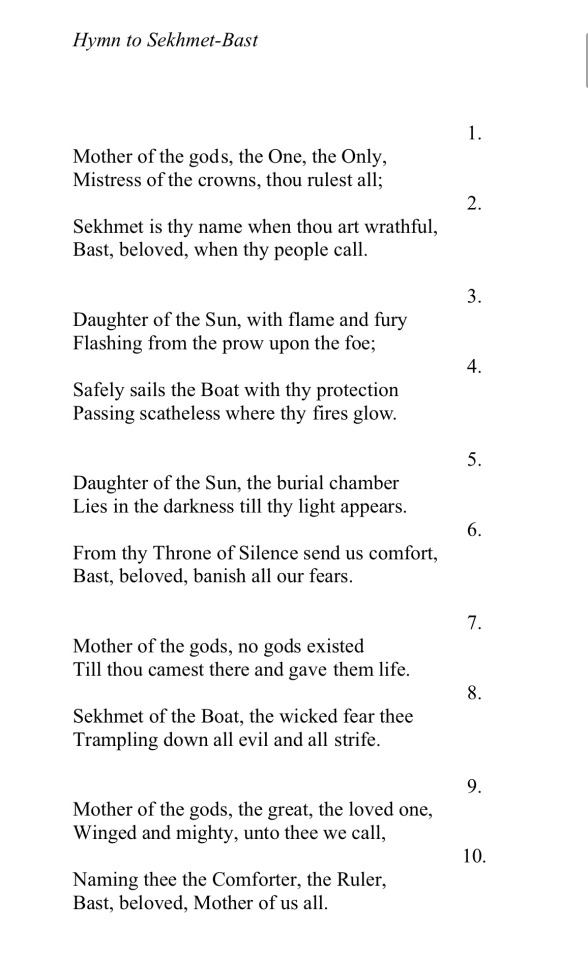
328 notes
·
View notes
Note
I don’t know if you have already done these two but I have been interested in learning more about Medusa and Bastet. When you get a chance, can you please do a post about Medusa and a post about Bastet?
Ways of honouring and Worshipping Bast/Bastet
(Medusa coming soon)
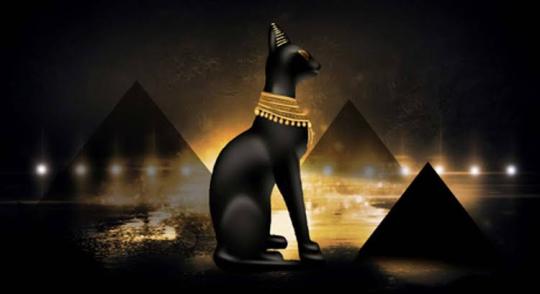
Associated plants/herbs: persea tree, alabaster,
Cat imagery
Cat claws and whiskers (ethically sourced)
Lioness and cobra imagery
Get a housecat (If you can)
Or alternatively donate to rescue shelters
Do protection magic in her honour!
Keep cat statues out front of your house as protectors
Help pregnant folks!
Donate to organisations that support women in need
But from women owned businesses
Support women just generally
Citrine, sunstone, carnelian and Rose quartz
Learn first aid or take up work in a medical field
Learn her other names such as "eye of Ra / eye of Atum", "she of the ointment jar", "perfumed protcetor"
Wear perfume
Put bottle of perfume on her altar or spray it around her altar
Eye imagery
Art and craftsmanship
Research her and her sister/counterpart, Sekhmet (protector of upper Egypt), one of the other 5 goddess who share in the name "Eye of Ra"
Research Wadjet, another Goddess who has gone by the name "Eye of Ra", she was also the Patron Goddess of lower Egypt, therefore entwining her with Bast, the protector of lower Egypt
Drink alcohol or leave it as an offering
Frankincense and Myrrh incense
Dance
Play or purchase a sistrum (available on amazon)
Spend time in the sun! Sunbathe like a cat
Learn who you are! Explore your gender and sexuality and then own it!
Practice your intuition
Keep a dream journal

A prayer to Bast/Bastet
Lady Bast beloved of the Gods (Mau Bast Merit Netcheru) we call to you Mighty Lady of the East, Right eye of Ra.
Thank you Beloved daughter of Ra for the blessings you bestow on all of us everyday.
Thank you for your love, most Powerful Mother. Thank you for the Peace and Protection you bring into our homes, to the temples and Sanctuaries; to the people and your Beloved Animals!
We are renewed by your Blessings each day, you are the rekindler of new life, Beloved Lady of Bubastis, who grants your creation, from the first occasion. [The world was said to have emerged from an infinite, lifeless sea when the sun rose for the first time, in a distant period known as Zep Tepi, or the First Occasion.]
Goddess, you are the Concealed One who shows us love and affection and who grants us pleasure to experience the deepest fulfillment of life. Our hearts rejoice in your presence like the Lotus praises Ra at each new day.
Lady of Blossoming you bring us joy and we thank you for bestowing this upon all of us! You have our love, oh beautiful Bast, Powerful One, Soul of Isis.
Offerings we make to you, flame of the Sun, Great Protectoress, Daughter of Delight, Infinite Fulfillment Made Manifest. Most honored Bast!
(Source)
470 notes
·
View notes
Photo

Dua Bast! Lady of the Perfumes, Lady of Bubastis, Eye of Ra (by me, 2020)
1K notes
·
View notes
Photo

See hi-res version here: patreon.com/posts/cutie-bot-tier-68230663
@thediktatortot requested Loki in an 80’s outfit if he was ever to show up in the Love & Thunder movie! I drew inspiration from Punk and Grunge fashion of the 1980’s to contrast Thor’s brighter outfit owo This was very fun to design <3
445 notes
·
View notes
Text
practicing pagans, what are the biggest tips and lessons you have about working with deities and spirits? i'm curious as to the comparisons and similarities.
472 notes
·
View notes
Photo


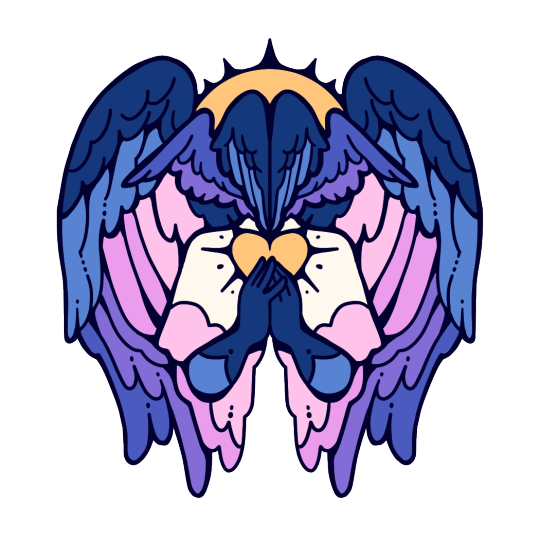
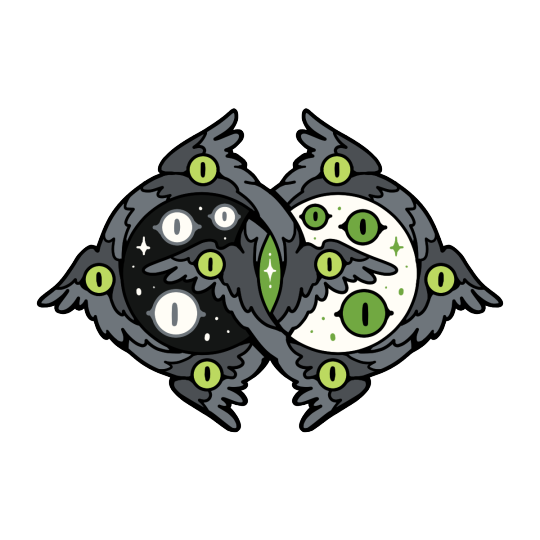

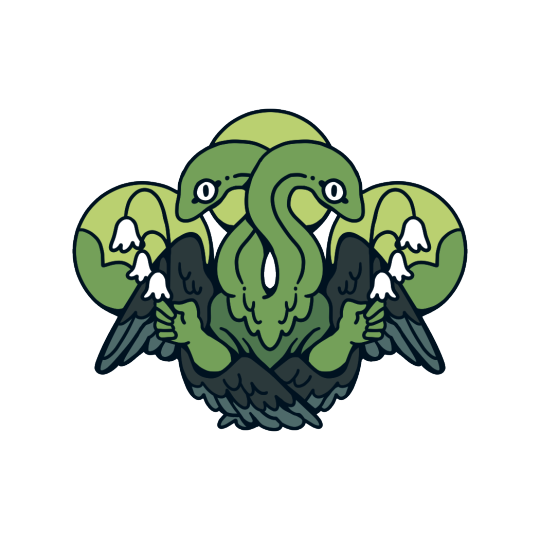



Part I of the new series of Pride Angels featuring Aroace, Abrosexual, Bigender, Agender, Omnisexual, Aromantic, Polysexual, Demigirl, and Demiboy angels. You can find the other angels here and here.
Free for personal, non-commercial use! Credit is appreciated.
9K notes
·
View notes
Text
Humans are eldritch. They can sing a thousand voices, and they only started space exploration after more than two hundred years of trying to fix their own sick planet. They are guilt-driven, reckless and incredibly terrifying. They scare themselves for fun, they have deadly sports, and they are willing to almost die just to see if something can work.
No other intelligent species we know does that. No one almost killed their entire planet for the sake of profits, and no one discovered they could sing it back to life. No one is fascinated by unknown and terrific creatures that would certainly destroy everything and everyone, much less create art about the mere idea of it. No one dedicates so much of their craft for incomprehensible arts that can only be felt.
The entire universe’s medicine has changed since they arrived. We had to discover ways of erasing memory, of calming someone in the blink of an eye, because human art can make someone so sick they might never recover from it. Rumours spread, and humans were now feared. Everything about them became something terrific.
We knew they felt guilty, from almost killing their homeplanet, but that? That art, those hundreds of thousands of ideas of things that could never be, but still could be thought about? Those hands, smudged with toxic paint and oils, used to create imaginary things that looked too real to be imaginary? Their bodies, almost fragile almost strong bodies, that adapted to everything and could be broken down for the sake of things they deemed as beautiful? That did not came from guilt. It came within their own terrifying natures, along their hundred voices that could heal, along their silence that could destroy, along everything they ever created.
But still, when everyone feared them, humans did not try to attack. They did not try to cover themselves once again with blood. They did not do anything with violence. Despite everything, humanity was kind.
They helped with medicine, with their vaccines. They helped with technology, with their reckless nature of wanting to see if something can explode. They helped with art, by showing their own, and admiring ours.
They helped with history, for their obsession with the past did not allow them to not want to know more. They helped with restauration, for their guilt made them want to stop anyone from making mistakes similar to theirs. They helped with war, for not doing it. They helped with the universe, for despite everything, they still loved.
Humans are eldritch, for everything was set so they could once again use violence, but they did not. Humans are eldritch, because they themselves think they are evil, but still, they do not commit to it. Humans are eldritch, and they will help you out when you need it - just ignore their pets, for they have an obsession with befriending any and all creatures.
edit: hi so this is gaining traction again! i’m a college student who does writing commissions, so feel free to check it out! have a nice day byeee
5K notes
·
View notes
Text
Misconceptions About Fairies
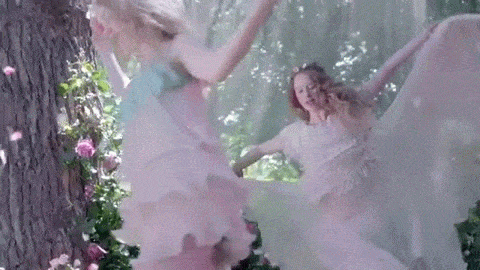
Lately I’ve been seeing a lot of buzz around the Good People on social media, as well as in my local witchy community. I’ve also seen a lot of misinformation being passed along and people being encouraged to dive in the deep end without knowing what they’re getting into, so I want to address some common misconceptions and spotlight some resources I know are legit.
I’ve said it before and I’ve said it again: with the Good People, perhaps more than any other type of spirit, it’s very important to know what you’re doing before you start reaching out to them. They operate on rules and ethics that are very different from ours, and even the most benevolent of them may be offended or angered by ignorance or bad manners. You cannot skip the reading when it comes to working with these beings. If you’re not willing to do the research and make an effort to follow the rules, this is not a crowd you should be messing with. I don’t say this to scare people or to discourage people who genuinely feel called to establish a relationship with the Good People. I just want to be clear that with this crowd there are risks, and most of those risks can be addressed by making sure you’re prepared.
In this post, you’ll see me refer to this class or grouping of magical beings as the Good People, the Other Crowd, the Good Neighbors, or similar euphemisms. This is because the word “fairy” is widely considered offensive, and using it may anger the Good People. My advice is to use your own euphemisms in order to be polite, even in casual conversation – avoid “the f-word” as much as possible. However, I will be using Fairy (with a capital F) as the name of the realm or plane where the Other Crowd lives.
Now, let’s start by addressing those misconceptions, shall we?
1. The Good People are nature spirits.
This is one that I’ve been guilty of spreading in the past. This one is tricky, because some of the Other Crowd could be considered nature spirits, but not all of them. It’s important to remember that “fairy” (and more polite euphemisms) is an umbrella term for many different types of beings. It’s about as specific as “animal.” And just like some but not all animals are mammals, some but not all of the Good People are nature spirits.
As a whole, the Good People don’t seem particularly attached to nature, although some of them tend to avoid humans and end up in wild natural settings as a result. However, true nature spirits are connected to a place or natural feature the same way human spirits are attached to our bodies, and this doesn’t seem to be true for the Good People.
2. The Good People are angels and/or spirit guides.
This one usually shows up in the context of New Age spirituality, but the association between angels and the Good People is actually much, much older. When the people of the British Isles converted to Christianity, they tried to reconcile their belief in the Other Crowd with Christian cosmology. Usually, this meant identifying the Good People with devils, but some people identified them as fallen angels. One version of the Christianization of the Good People describes them as angels who refused to pick sides in the war between God and Satan and are exiled from both Heaven and Hell.
I’ve seen New Age authors like Doreen Virtue describe the Good People as “earth angels” or say that, like angels, they are “high vibrational” beings of pure love and light. This directly contradicts folklore, which describes the Good People as beings with physical bodies with a wide range of attitudes towards humans. The Good People could be helpful allies, mischievous pranksters, or cruel predators. Even the ones who seem to like humans aren’t especially pious or virtuous, and they definitely aren’t interested in our spiritual development.
The idea of the Good People are spirit guides reduces these beings, who are their own people with their own personalities, goals, and agendas, to servant spirits whose only purpose is to help us grow and learn. That’s a pretty self-centered approach to spirituality, and it’s honestly one that I don’t think many of the Good People would put up with.
3. The Good People are tiny and have wings.
I mean, some of them sort of look like this? There are folkloric accounts of beings that are between 6 and 18 inches tall, but as far as I can tell the wings are a modern development. Descriptions of tiny winged people who are small enough to take a nap inside a flower are a Victorian English invention, as popularized by the Cottingley Fairies hoax, a series of faked photographs that supposedly showed a real Otherwordly encounter:

Most older descriptions from Ireland, Scotland, Wales, and Britain describe the Good People as looking similar to humans or animals. They might look like normal people except for being totally green, like the Green Children of Woolpit or the Green Knight that appears in Arthurian legend. They might be dressed in green and/or red. In folklore the Good People typically wear contemporary clothing, so if you saw one today they might very well be in jeans and a T-shirt. Sometimes in folklore, the Good People are indistinguishable from humans.
Some of the Other Crowd appear as animals, but there’s often some sort of tell that indicates an Otherworldly animal, like a kelpie appearing as a horse whose mane is always dripping or the púca appearing as a black horse with glowing golden eyes. Some of them don’t look like humans or like animals and are clearly Otherwordly in appearance, like trows, trolls, and goblins.
4. The Good People are All Friendly to Humans
Again, some of them are. Some of the Good People, like brownies, choose to live in humans’ homes and communities and actively help out around the house. Then there are others, like the Baobhan Síth, hags, and red caps that prey on humans, sometimes literally. Many of the Good People seem indifferent to humans.
The problem with this is that when you invite the Other Crowd into your home, you’re inviting all of them into your home. This is why I personally prefer to work with the Good Neighbors outside my home – we have an elder tree (a species associated with the Good Neighbors) growing on the edge of our property, and I use this as a place to leave offerings for them. This way I’m showing respect for them and offering gifts in good faith, but I’m not opening up my home.
Another option is to invite specific individuals or types of the Good People in by name. For example, there are things you can do to attract a brownie. I do want to note that even beings that are usually friendly, like brownies, can be dangerous if you piss them off, so you should only invite them into your home if you’re willing and able to commit to keeping them happy.
5. You have to be psychic or have the Second Sight to interact with the Good People.
First of all, I firmly believe that all people have the potential for psychic abilities and that anyone can develop these gifts through practice. In folklore there are ways of developing the Second Sight, if that’s something that is really important to you. (Just be aware that some of the Good People prefer to be unseen and can take offense to humans trying to look into Fairy.)
But you don’t need the Second Sight or experience with psychic practice to interact with the Good People. Most of the people who historically worked with these beings did not have the Sight. You can still leave offerings and see evidence of their presence, and if you really want to communicate with them directly you can use a divination tool.
Further Reading/Viewing:
Fairies: A Guide to the Celtic Fair Folk by Morgan Daimler
Fairy Witchcraft by Morgan Daimler
Faery: A Guide to the Lore, Magic, & World of the Good Folk by John T. Kruse
“Faery Magick Misconceptions | Working with the Fae | Witchcraft” by HearthWitch on YouTube
“What Do We Call the Fairies in Ireland?” by Lora O'Brien on YouTube
“5 Common Misconceptions About Fairies” by Morgan Daimler on YouTube
(I’ve made a playlist of videos on the Good People I find helpful, which you can watch here!)
948 notes
·
View notes
Photo

My photo of:
Isis-Aphrodite
Terracotta 2nd Century AD
This is from an interesting time period during the reign of the Greek descendant Ptolemaic line of Pharaohs in Egypt. The Greek and Egyptian cultures influenced each other in such a way that these sort of hybrid gods were created. These are some of my favorite statues to see and find since they all vary so much.
278 notes
·
View notes




